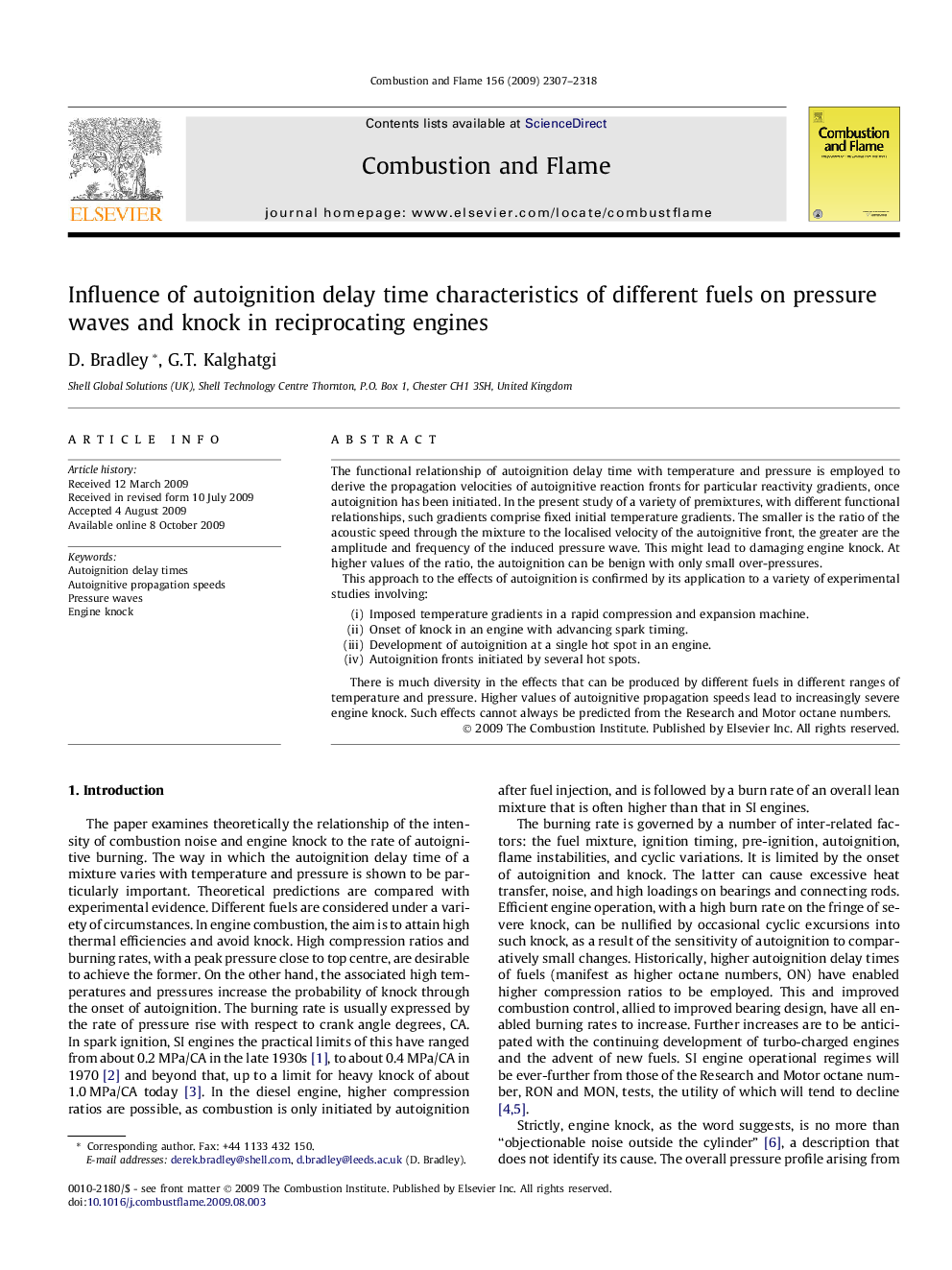| Article ID | Journal | Published Year | Pages | File Type |
|---|---|---|---|---|
| 169447 | Combustion and Flame | 2009 | 12 Pages |
The functional relationship of autoignition delay time with temperature and pressure is employed to derive the propagation velocities of autoignitive reaction fronts for particular reactivity gradients, once autoignition has been initiated. In the present study of a variety of premixtures, with different functional relationships, such gradients comprise fixed initial temperature gradients. The smaller is the ratio of the acoustic speed through the mixture to the localised velocity of the autoignitive front, the greater are the amplitude and frequency of the induced pressure wave. This might lead to damaging engine knock. At higher values of the ratio, the autoignition can be benign with only small over-pressures.This approach to the effects of autoignition is confirmed by its application to a variety of experimental studies involving:(i)Imposed temperature gradients in a rapid compression and expansion machine.(ii)Onset of knock in an engine with advancing spark timing.(iii)Development of autoignition at a single hot spot in an engine.(iv)Autoignition fronts initiated by several hot spots.There is much diversity in the effects that can be produced by different fuels in different ranges of temperature and pressure. Higher values of autoignitive propagation speeds lead to increasingly severe engine knock. Such effects cannot always be predicted from the Research and Motor octane numbers.
